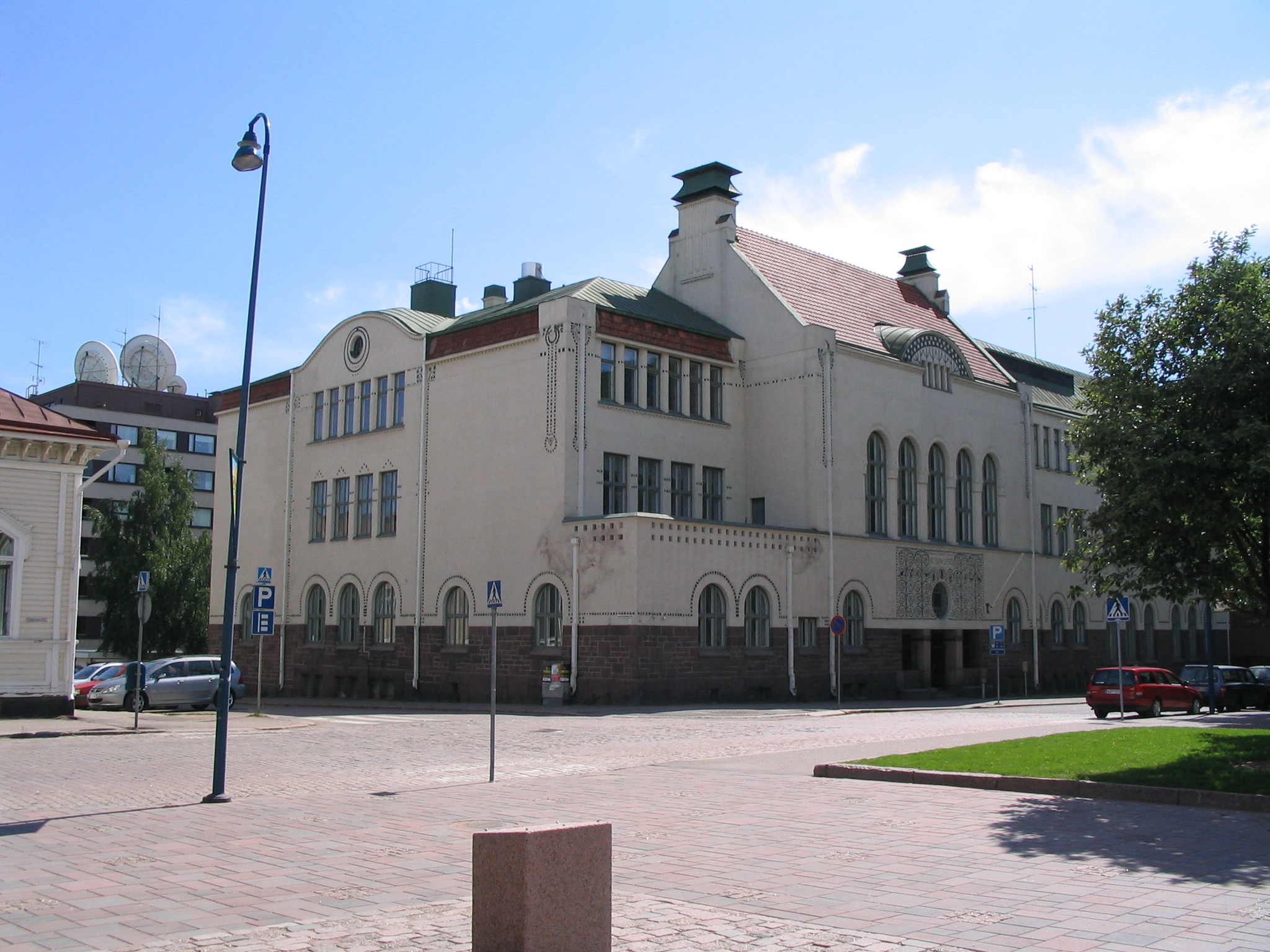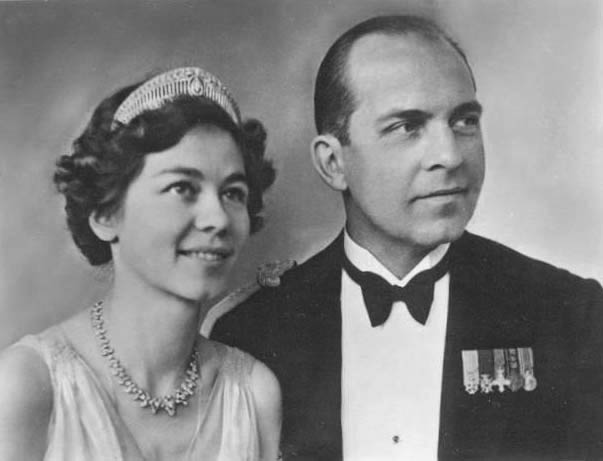|
Anavryta Classical Lyceum
The Classical Lyceum Anavryton (official name "Ethnikon Ekpaideftirio Anavryton", but commonly known as Anavryta) was an elite Greek lyceum (originally a boarding school only for boys) that was established shortly before the beginning of the World War II in 1940, in order to provide education to the members of the Greek royal family and notable Athenian families and reestablished after the war in 1949. Since that year the school was named a "Lyceum Aristouhon" which only admitted students who distinguished themselves in other schools. After several educational reforms in Greece the school lost its elitistic character in 1976, but continued to have higher admissions standards until the end of the 80's. Nowadays, admission is dependent on passing a written test. Anavryta was originally based on the educational principles of Kurt Hahn, and modelled on Hahn’s own creations the Schule Schloss Salem and Gordonstoun. The effort to create an elite high school in Athens inspired by H ... [...More Info...] [...Related Items...] OR: [Wikipedia] [Google] [Baidu] |
Lyceum
The lyceum is a category of educational institution defined within the education system of many countries, mainly in Europe. The definition varies among countries; usually it is a type of secondary school. Generally in that type of school the things that are taught are basic science and also in some part of that type of schools, some introduction to specific kind of jobs also may be done. History ''Lyceum'' is a Latin rendering of the Ancient Greek (), the name of a '' gymnasium'' in Classical Athens dedicated to Apollo Lyceus. This original lyceum is remembered as the location of the peripatetic school of Aristotle. Some countries derive the name for their modern schools from the Latin but use the Greek name for the ancient school: for example, Dutch has (ancient) and (modern), both rendered ''lyceum'' in English (note that in classical Latin the ''C'' in was always pronounced as a ''K'', not a soft ''C'', as in modern English). The name ''lycée'' was retrieved and utili ... [...More Info...] [...Related Items...] OR: [Wikipedia] [Google] [Baidu] |
Constantine II Of Greece
Constantine II ( el, Κωνσταντίνος Βʹ, ''Konstantínos II''; 2 June 1940) reigned as the last King of Greece, from 6 March 1964 until the abolition of the Monarchy of Greece, Greek monarchy on 1 June 1973. Constantine is the only son of Paul of Greece, King Paul and Frederica of Hanover, Queen Frederica of Kingdom of Greece, Greece. As his family was forced into exile during the Second World War, he spent the first years of his childhood in Kingdom of Egypt, Egypt and Union of South Africa, South Africa. He returned to Greece with his family in 1946 during the Greek Civil War. George II of Greece, King George II died in 1947, and Constantine's father became the new king, making Constantine the Crown Prince of Greece, crown prince. He acceded as king in 1964 following the death of his father, Paul of Greece, King Paul. Later that year he married Princess Anne-Marie of Denmark with whom he eventually had five children. Although the accession of the young monarch was ... [...More Info...] [...Related Items...] OR: [Wikipedia] [Google] [Baidu] |
Buildings And Structures In North Athens
A building, or edifice, is an enclosed structure with a roof and walls standing more or less permanently in one place, such as a house or factory (although there's also portable buildings). Buildings come in a variety of sizes, shapes, and functions, and have been adapted throughout history for a wide number of factors, from building materials available, to weather conditions, land prices, ground conditions, specific uses, prestige, and aesthetic reasons. To better understand the term ''building'' compare the list of nonbuilding structures. Buildings serve several societal needs – primarily as shelter from weather, security, living space, privacy, to store belongings, and to comfortably live and work. A building as a shelter represents a physical division of the human habitat (a place of comfort and safety) and the ''outside'' (a place that at times may be harsh and harmful). Ever since the first cave paintings, buildings have also become objects or canvasses of much artistic ... [...More Info...] [...Related Items...] OR: [Wikipedia] [Google] [Baidu] |
Schools In Attica
A school is an educational institution designed to provide learning spaces and learning environments for the teaching of students under the direction of teachers. Most countries have systems of formal education, which is sometimes compulsory. In these systems, students progress through a series of schools. The names for these schools vary by country (discussed in the '' Regional terms'' section below) but generally include primary school for young children and secondary school for teenagers who have completed primary education. An institution where higher education is taught is commonly called a university college or university. In addition to these core schools, students in a given country may also attend schools before and after primary (elementary in the U.S.) and secondary (middle school in the U.S.) education. Kindergarten or preschool provide some schooling to very young children (typically ages 3–5). University, vocational school, college or seminary ... [...More Info...] [...Related Items...] OR: [Wikipedia] [Google] [Baidu] |
Educational Institutions Established In 1940
Education is a purposeful activity directed at achieving certain aims, such as transmitting knowledge or fostering skills and character traits. These aims may include the development of understanding, rationality, kindness, and honesty. Various researchers emphasize the role of critical thinking in order to distinguish education from indoctrination. Some theorists require that education results in an improvement of the student while others prefer a value-neutral definition of the term. In a slightly different sense, education may also refer, not to the process, but to the product of this process: the mental states and dispositions possessed by educated people. Education originated as the transmission of cultural heritage from one generation to the next. Today, educational goals increasingly encompass new ideas such as the liberation of learners, skills needed for modern society, empathy, and complex vocational skills. Types of education are commonly divided into formal, ... [...More Info...] [...Related Items...] OR: [Wikipedia] [Google] [Baidu] |
Anavryta Experimental Gymnasium
The Anavryta Experimental Gymnasium ( el, Πειραματικό Γυμνάσιο Αναβρύτων), also simply referred to as Anavryta is an experimental, co-educational, public gymnasium located in the area of Maroussi in Athens, Greece. It is in the same complex as the Anavryta Experimental Lyceum The Anavryta Model Lyceum ( el, Πρότυπο Λύκειο Αναβρύτων), colloquially referred to simply as Anavryta, is a model, experimental, co-educational, state school, public lyceum (students aged 16–18), located in the northern subu .... External linksOfficial Website {{coord missing, Greece Schools in Greece Marousi ... [...More Info...] [...Related Items...] OR: [Wikipedia] [Google] [Baidu] |
Model School
A model is an informative representation of an object, person or system. The term originally denoted the plans of a building in late 16th-century English, and derived via French and Italian ultimately from Latin ''modulus'', a measure. Models can be divided into physical models (e.g. a model plane) and abstract models (e.g. mathematical expressions describing behavioural patterns). Abstract or conceptual models are central to philosophy of science, as almost every scientific theory effectively embeds some kind of model of the physical or human sphere. In commerce, "model" can refer to a specific design of a product as displayed in a catalogue or show room (e.g. Ford Model T), and by extension to the sold product itself. Types of models include: Physical model A physical model (most commonly referred to simply as a model but in this context distinguished from a conceptual model) is a smaller or larger physical copy of an object. The object being modelled may be small ( ... [...More Info...] [...Related Items...] OR: [Wikipedia] [Google] [Baidu] |




